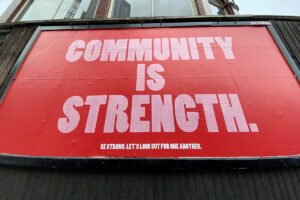November 23, 2011; Source: Sumption & Wyland | Michael Wyland is one half of the Sumption & Wyland consulting firm, and, fortunately for NPQ, a regular reader and commenter on NPQ newswires. Lately, he has posted comments on our coverage of the child abuse scandal swirling around former assistant football coach at Penn State University Jerry Sandusky and the youth charity he founded, Second Mile. Wyland has posted a very useful inventory of some of the governance problems of the Second Mile, which lead to “lessons . . . that other nonprofit organizations can learn from.” He cites 12 issues that he characterizes as “departures from what is generally considered ‘best practice’ in nonprofit governance and management”:
Founder’s Syndrome
Founder as Titled Corporate Officer
Board Conflicts of Interest—General
Conflict of Interest—CEO and Spouse Both Employed by Nonprofit
CEO with Multiple Professional Relationships
Board Members Sharing Employment Relationship
Sign up for our free newsletters
Subscribe to NPQ's newsletters to have our top stories delivered directly to your inbox.
By signing up, you agree to our privacy policy and terms of use, and to receive messages from NPQ and our partners.
Lack of Board Term Limits
Complex Governance Structure
Board(s) Too Large
Donors and Celebrities as “Leaders”
Access to Legal Counsel
Some of these we’ve mentioned in the newswire, but Wyland found some items that are real head-scratchers and good catches on his part:
- The Second Mile bylaws established an official position as a corporate officer and member of the board’s executive committee for “the Founder,” that is, Sandusky, with powers that explicitly conflict with the powers of the board’s vice chairperson.
- The CEO of Second Mile, Dr. Jack Raykovitz (who just recently resigned) and his wife were both employed by the organization, and, according to the organization’s 2009 annual filing (Charitable Organization Registration Statement) with the Commonwealth of Pennsylvania, had responsibility for both the income and expenses of the group, a practice generally to be avoided.
- It is unclear whether Raykovitz’s full-time employment at Second Mile also included his work as a psychologist for both the Midstep Centers for Child Development and the Scenery Park Psychology Group.
- Wyland found “two sets of two board members who share the same employer,” and “[i]n both cases, it appears that one of the two board members reports to the other at their place of employment.” He notes that it isn’t a good idea for board members’ “ability to act in the best interest of the nonprofit” to be potentially “compromised by other relationships.”
Wyland’s analysis uses Second Mile as a fascinating tutorial on problems in nonprofit structure and governance. It doesn’t mean that any or all of these led to or created the problems alleged to have occurred with Sandusky and the victims named in the grand jury report or who have reportedly come forward since, including a member of Sandusky’s family. It does however point out how we should all take every opportunity to learn from scandals like the Second Mile/Penn State imbroglio, not to shove them under the rug as nonprofit anomalies. Wyland’s brief blog posting is well worth reading, and it is well worth asking ourselves to what extent these practices look like issues we have seen in other nonprofits—including our own.—Rick Cohen











